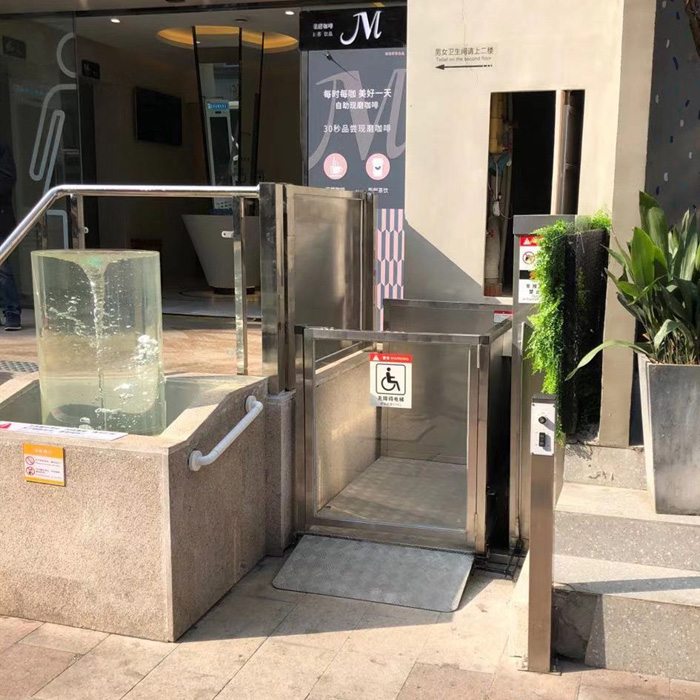
Vertical platform lifts are an essential addition in modern buildings to improve accessibility for individuals with mobility challenges. These lifts provide a safe and reliable means for people with disabilities or limited mobility to access different levels of a building effortlessly. By eliminating barriers such as stairs and uneven surfaces, vertical platform lifts promote inclusivity and independence for individuals who require wheelchair or scooter access. Let us explore in detail how these lifts enhance accessibility in buildings.
One of the key aspects that vertical platform lifts contribute to improving accessibility is by providing a barrier-free entrance to a building. By installing a platform lift at the main entrance, individuals with mobility impairments can effortlessly enter and exit the building. This eliminates the need for ramps or additional assistance, which might prove difficult in certain situations.
Vertical platform lifts also play a vital role in enhancing accessibility within different levels of a building. Traditionally, individuals with disabilities were restricted to accessing only the ground level or faced difficulties in reaching different floors due to stairs. However, with the installation of these lifts, individuals can easily access any floor or level without any hindrance. This allows them to explore the building freely, access services, and interact with others without any limitations.
Safety is a critical factor when it comes to accessibility, especially for people with disabilities or limited mobility. Vertical platform lifts are designed with safety features to ensure the well-being of the users. These lifts generally have non-slip platforms, handrails, safety gates, and emergency stop buttons, providing a secure environment for individuals during their travel. Such safety measures offer peace of mind to both users and building owners, knowing that there is a reduced risk of accidents or injuries.
In addition to improving accessibility for individuals with mobility impairments, vertical platform lifts benefit a wide range of people, including the elderly, pregnant women, and those with temporary injuries. These lifts make the transportation of heavy objects, such as furniture or equipment, much easier and safer. Such versatility ensures that vertical platform lifts serve as an essential accessibility tool for all individuals, regardless of their specific needs or circumstances.
Vertical platform lifts are also designed to be energy efficient and environmentally friendly. Many models are equipped with energy-saving features, such as LED lights, standby mode, and low power consumption. These energy-efficient characteristics not only reduce operating costs for building owners but also contribute to a more sustainable and eco-friendly environment.
Furthermore, vertical platform lifts are built with advanced technology to ensure a smooth and comfortable ride for users. These lifts typically have quiet operation, smooth start and stop mechanisms, and adjustable speed settings. This ensures that individuals can travel in the lifts without any discomfort or disturbances. Additionally, some models offer customization options, allowing users to adjust the lift’s height, platform size, and other features according to their specific requirements.
Vertical platform lifts are designed to blend seamlessly with the architectural aesthetics of a building. Most models offer various design options, finishes, and color choices, enabling building owners to integrate the lifts elegantly into their structures. The aesthetically pleasing appearance of these lifts not only enhances the overall ambiance of the building but also promotes inclusivity by ensuring that individuals with disabilities are not stigmatized or singled out.
Vertical platform lifts significantly improve accessibility in buildings by addressing mobility challenges faced by individuals with disabilities or limited mobility. These lifts ensure barrier-free access to buildings, enable easy movement between different levels, enhance safety, and cater to the diverse needs of users. Moreover, their energy efficiency, advanced technology, and aesthetically pleasing design make them an indispensable tool for promoting inclusivity and independence for all individuals in both public and private spaces.
